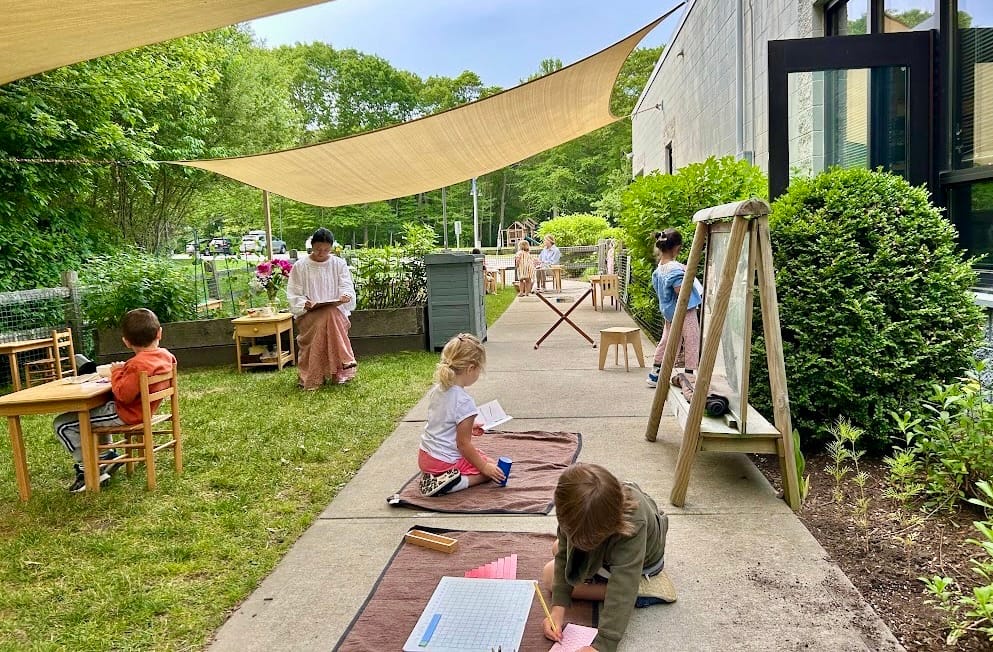New families often ask, “How do you know how my child is doing without tests?” The answer is that the classroom guides (teachers) assess your child each and every day through observation. Objective observation is the most essential tool in a Montessori teacher’s toolkit. Observation is more than just watching; it’s about paying close attention to what a child does and how they interact, so we can understand where they are developmentally and how best to support them. This helps us create learning experiences that truly fit each child.
Dr. Maria Montessori believed that careful observation was the foundation for truly understanding and meeting a child’s developmental needs. She emphasized that by watching closely and patiently, educators could pick up on the natural rhythms of learning and better support each child’s path toward independence.

Guides observe and take notes all day long in the classroom, during lessons, on the playground, and even during lunch. This close attention helps identify when a child is ready for the next lesson or new challenges, fostering confidence without pressure. By watching how children interact with their environment and one another, guides can make thoughtful changes that encourage focus, collaboration, and well-being
At Quest, observation strengthens relationships, informs daily decisions, and ensures each child is seen, known, and supported. A deeper dive into observation in the Montessori classroom can be found here: https://www.montessoriaction.com/importance-observation-montessori-pedagogy/
